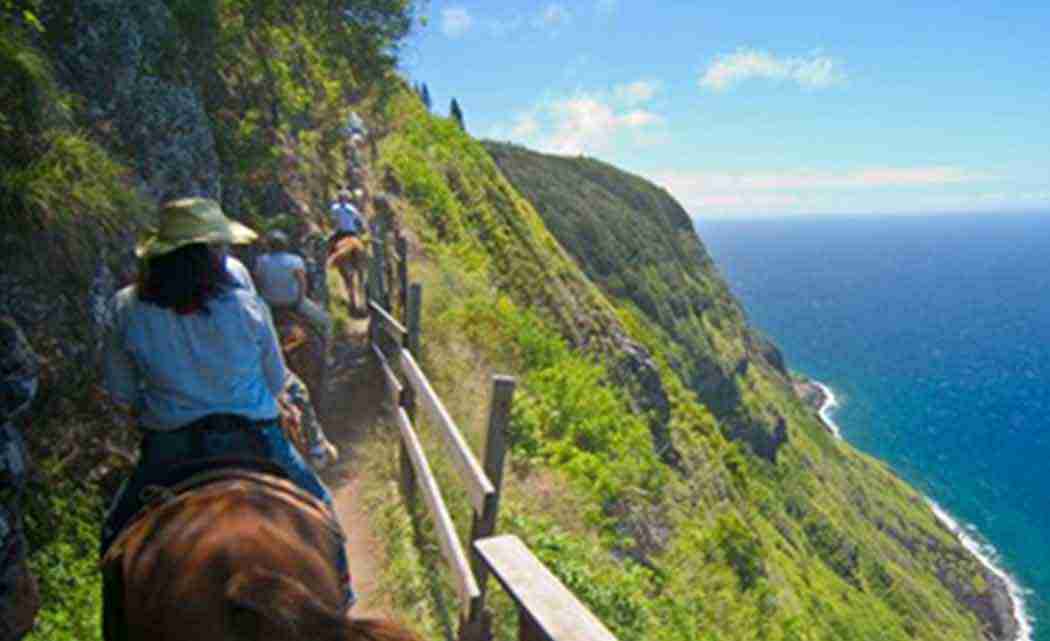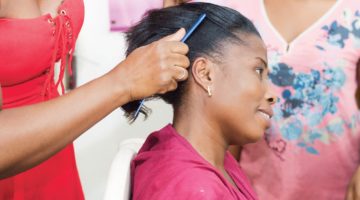By JENNIFER SINCO KELLEHER
HONOLULU (AP) _ A remote peninsula that has been the home of leprosy patients since the 19th century could be opened more fully to the public as the last remaining residents near the end of their lives.
Now called Kalaupapa National Historical Park, the site is now only open to 100 adults per day. No children are allowed to visit. The park on the island of Molokai is accessible exclusively by plane or mule.
Once the last patient dies, the National Park Service would like to open the park to more visitors, including children, according to a draft of the agency’s long-term management plan. The patients at the site _ who chose to continue living at Kalaupapa after the mandatory exile of leprosy patients there was lifted by the state in 1969 _ range in age from 92 to 73.
“Visitor regulations would change, including allowing children to visit Kalaupapa with adult supervision, and removing the 100 person per day cap while continuing to limit the number of visitors per day through new mechanisms,” the park service said in a summary of its preferred alternative.
In 2011, when the public process for developing the long-range plan began, the public was given a chance to comment. Most who weighed in supported a limit on daily visitors, saying they didn’t want it turned into a tourist trap. Some recommended giving Native Hawaiians less restricted access because most of the 8,000 people who died at Kalaupapa were Hawaiian.
Alika Cullen, general administrator at Cathedral Basilica of Our Lady of Peace in downtown Honolulu, said he has visited Kalaupapa about 40 times. He has mixed feelings about plans to open up Kalaupapa to more people, he said.
“The world should know of the trials these people endured and how they overcame physical and mental roadblocks,” Cullen said in an email. “On the other hand, I do not wish to see a change so soon after the last patient dies. … The settlement has kept the peninsula pretty sparse for the welfare of the patients and that is what makes the place special.”
A former leprosy patient who lives at the site said he would like see more visitors now.
“Come when we alive,” Clarence “Boogie” Kahilihiwa, 74, the second-youngest patient, said in a phone interview with The Associated Press on Monday. “No come when we all dead.”
He would especially like to see children there, Kahilihiwa said. “I’d like to see the children and if they like hear our story, I can tell them personally,” he said.
Kahilihiwa has lived at Kalaupapa since 1959 and has seen the disease’s stigma subside over the years. Leprosy, known as Hansen’s Disease, was once feared as highly contagious and long-lasting infection caused by bacteria. But it’s now very rare and easily treated.
“Before it was shame, they didn’t want to talk to us,” Kahilihiwa said. “But now, everybody wants to reach out.”
The area also has strong connections to the Roman Catholic Church because Saints Damien and Marianne cared for leprosy patients there. Damien contracted the disease and died in 1889, while Marianne died in 1918 of natural causes.
Both were buried at Kalaupapa until their remains were exhumed _ Damien at the request of the Belgian government seeking to return him to his birthplace and Marianne during the sainthood process.
The aging patients also represent a turning point for the Sisters of St. Francis, which continues to provide nuns to help care for the patients.
“I want to make sure our sisters are here in Kalaupapa until the last patient goes,” said Sister Alicia Damien Lau, one of two nuns at Kalaupapa. “After that we, too, will have to look at what our purpose will be.”
The rest of the residents living there are mostly park service employees who tend to more than 200 historic structures.
The public has until June 8 to comment on the various alternatives the park service has released, including its preferred option. There are public meetings scheduled statewide, with first one taking place Monday evening on Kalaupapa.













No Comment